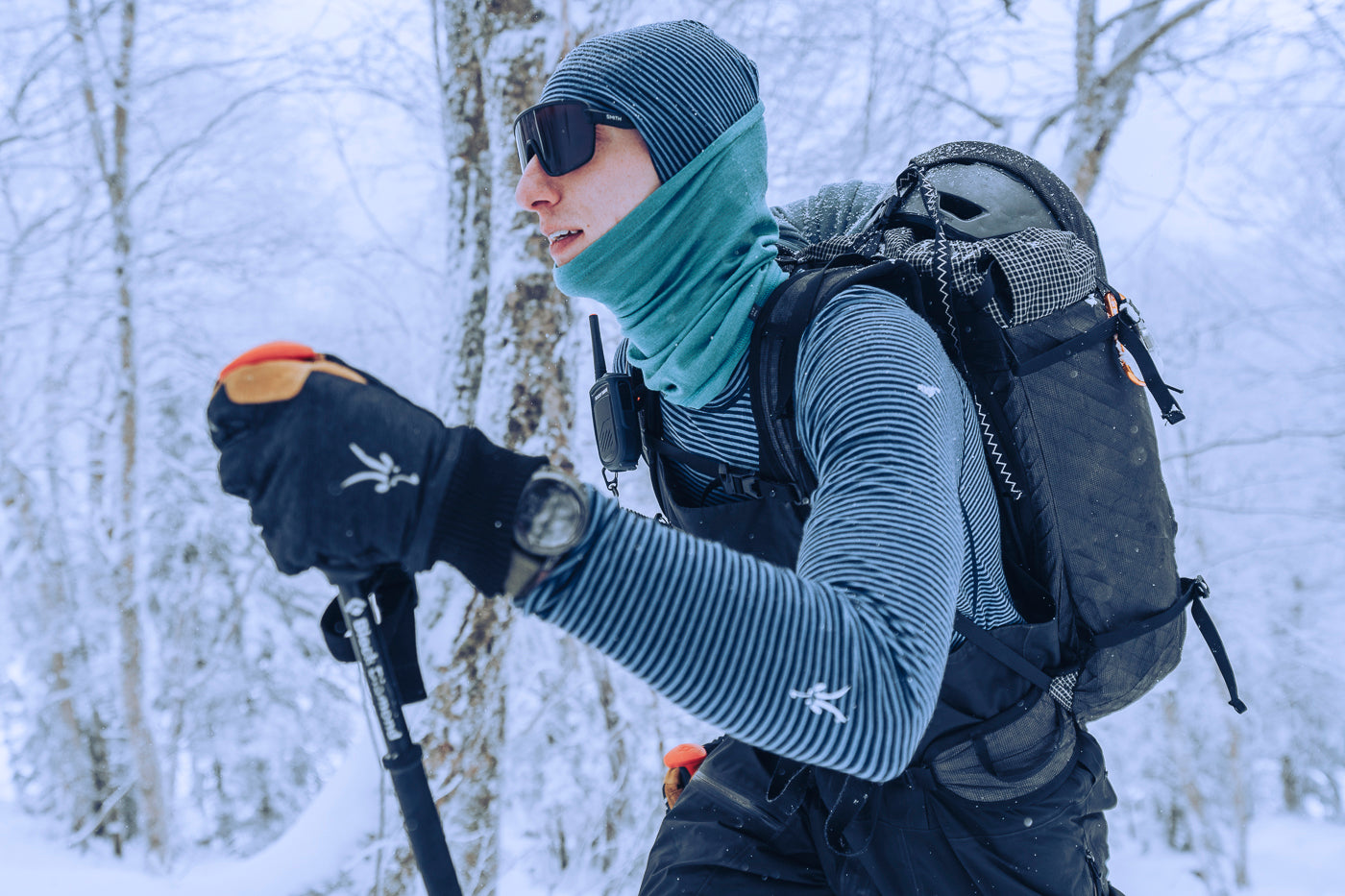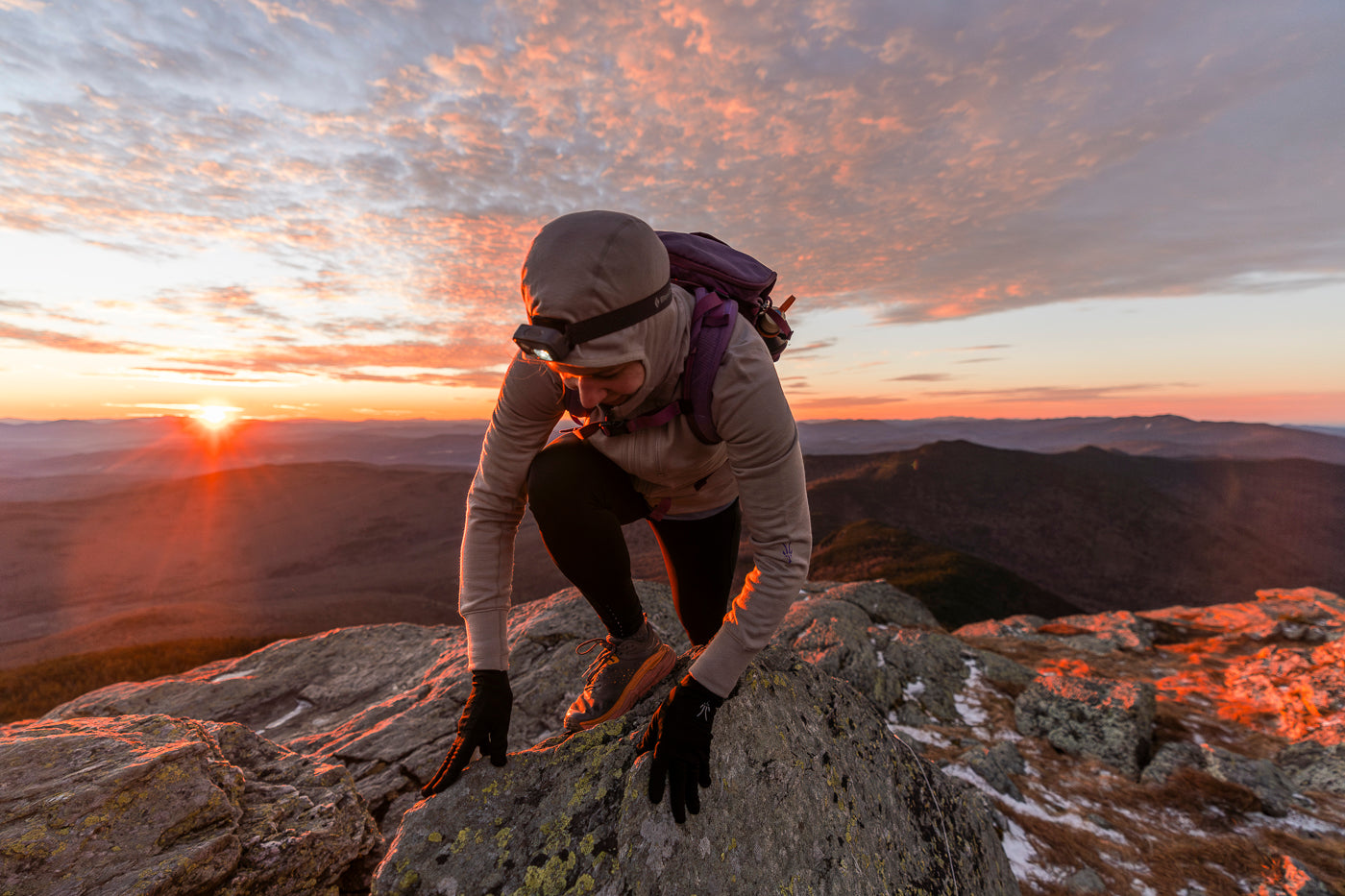The Great Paddle:
Circumnavigating Great Wass Island
By Christine Reighley
Whoosh. The bow of my kayak pointed skywards momentarily, before leveling off on the crest of a wave. I quickly glanced to my left, where Cam paddled some six feet below me, in the adjacent trough. On the far side of his boat, the towering pink granite cliffs of Red Head on Great Wass Island rose above us into the murky grey fog closing in on all sides, limiting visibility to a few hundred yards. The view was fleeting, as my boat plunged downwards off the wave, offering a view only of the heaving sea surrounding me. This place was truly wild.



For those who haven’t had the fortune to experience Maine’s coastline, it is something of a transitional zone from the southern beachgoer-friendly eastern seaboard to the rough and desolate shore of the Canadian Maritimes. It can be divided into three distinct provinces: the southern beaches, where miles of white sand beckon swimmers with August water temperatures approaching 70°F; the midcoast with its long peninsulas, granite coastlines, and quintessential New England harbors filled with lobster boats; and Downeast, which tends to have imposing granite shorelines, one of the highest tidal ranges in the world (approaching 20ft), cold 55°F ocean temps in the height of summer, and notoriously fickle weather.
My partner, Cam, and I have been kayaking the Maine coastline for years, and have had trips that flirted with the edge of Downeast Maine, but this was our first trip into the heart of that rugged region. On our three-night trip, we covered about 35 miles around Great Wass Island and its archipelago. Like any offshore kayaking trip, it required a mix of years of shared experience, careful planning, the right equipment (including duplicate charts and compasses as well as a GPS), attitude, and awareness of our surroundings to pull off.
By the time we slipped our boats into the water in Jonesport on the first afternoon of our trip, we had a little less than an hour and a half of daylight left. As we made our way towards the Beals Island Bridge, we had our first experience with the intensity of the Downeast tides—18ft tides ripped through the narrows under the bridge, and it felt like paddling upstream, gaining little distance with each stroke. Fighting the incoming tide through Moosabec Reach involved some head-down intensity and showed us the true power of the ocean—a force we repeatedly learned not to underestimate. We strongly encourage kayakers to hire an experienced guide for a trip like this.





Once we made it through the chokepoint of the channel and were on the other side of the bridge, the current diffused and we set our sights on the islands we’d weave through to our ultimate destination. Chasing the sun became our primary concern.
Between the dwindling light on the western horizon and our tide-slowed progress, our initial campsite plan was now out of reach, but lucky for us, we were able to reach a closer first-come-first-serve campsite managed by the Maine Island Trail Association, so we pulled ashore there instead. It’s always important on trips like these to stay flexible, so you can avoid the undue risk associated with pushing onward in the face of bad weather or dwindling daylight.
We unloaded our boats, pulled them up well beyond the high tide line, slipped into some warmer layers as the temperature dropped into the low 50s, and enjoyed some dinner. It wasn’t long before the afterglow faded and an incredible night sky exploded into view overhead. With only one manmade light in sight—Nash Island Lighthouse five miles to the west—the sky got much darker than it does back home, and the stars shone brighter than seemed possible.
We awoke the next morning to find a blanket of fog had settled along the coast, with visibility maxing out at 100ft. Rather than paddle out to Nash Island Lighthouse into the thick of it, we enjoyed a slow morning to cook a good breakfast and wander Great Wass on foot. Usually, the pace of our adventures is jam-packed with activities, but there’s a certain luxury that comes from leaning into the mood of the ocean — moving when the seas allow for it and resting when it’s not ideal to do so. We used our weather-forced rest day to lounge in hammocks and explore the island via the Buoy Trail, a 3-mile hiking loop that meanders through mossy forests and along gorgeous pocket beaches. In the evening, we played cards by headlamp-light until we eventually tucked into the tent early before the big paddle to come.





From the mountains to the sea and everywhere in between, you can find Christine Reighley adventuring with a camera in hand. She grew up on the coast of Maine and, after some worldly travels, has settled back in Portland. Most of the time, she's exploring the state with her partner, Cam Held, collecting stories and capturing scenes for the small business they run called Maine the Way.





